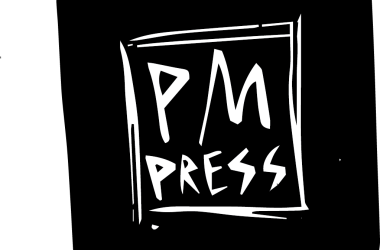(This is, overall, an unusually long review. Because of this and that it is possibly a somewhat sensitive subject, I have divided it into two. The second part, where I discuss lessons from the movement, is behind the wall, but can be obtained on request, and is laid out at the same time.)
When the police put a bullet in the back of the head of the student Benno Ohnesorg in connection with a demonstration in West Berlin on June 2, 1967, they do not know that it should have unforeseen and undesirable consequences. Among other things, an anarchist inspired city guerrilla will emerge in the city and be dramatically active throughout the 70’s. The group takes the name June 2 movement.
The book From hash rebels to urban guerilla (PM Press 2024) documents the history of this group by collecting English translated manifestos, interviews, comments and analyses of members in the group from different time periods, right up to the 00’s. The group had a total of a couple of dozens of members in the underground part, but many more supporters and supporters. There are also Swedish connections, including the plans to kidnap Social Democratic State Council Anna-Greta Leijon after the occupation of the West German embassy.
Editors Roman Danyluk and the author Gabriel Kuhn (also general secretary of the SAC Syndicalists and, moreover, for the sake of transparency, a good friend) introduce and find out all this in two introductory texts, and at the beginning of the book there is also a grateful person gallery and timeline for the events. The editors’ overall stance to the June 2 movement is “critical solidarity”, and Kuhn believes that the discussions that the book reflects are still highly relevant to “for revolutionary politics in the’metropole’ (First World/Global North)”, and specifically mentions the issues of armed struggle and the relationship between the working class and the left as an example. In the foody and well-written introduction, Roman Danyluk puts the group into a historical-political context where, among other things, the 68-left, the anti-colonial liberation movements, feminists and LGBTQ activists, alternative culture and developments in Germany during and after the war are important elements. In this soil, “autonomous movements trying to change society and replace the hell of capitalist exploitation and alienation with a socialist society of free people—no rules, no coercion.”
Once the group is founded, classic city gustral gadgets will be engaged, such as bank robbery, attacks on the legal system and the war industry, shoot outs with the police and kidnappings. There were contacts and many similarities with the better known Red Army Fraction (RAF), but here the differences are also highlighted. The RAF was a Marxist-Leninister, even harder, and had an anti-imperialist focus. The June 2 movement had more contacts with the wider left and wanted to minimize deaths, and themselves meant that they had a different class base: “The RAF disregards the struggles of the most exploited: women, foreigners, and young German unskilled workers.”
The group’s most famous action is the kidnapping of the Christian Democratic politician and mayoral candidate Peter Lorenz, a long interview from the 90s about this belongs to the most interesting sections of the book. It describes in detail both purpose, planning, implementation, results and after-playing of the action. They demanded and obtained the release of a handful of prisoners from various left-wing city guerrillas. What happened also illustrates the problematic with the reactionary concept of “Stockholm syndrome”. Lorentz also described the kidnappers as intelligent people who treated him well and refused to cooperate with the police, but even the kidnappers were affected by the relationship: “Who was going to kill him if our plan went south? We no longer saw him as a pig, just as a rather naive fellow.” It is simply much harder to reduce a fellow human being, even if it is a political enemy, to a vicious monster when approaching each other. Even in extreme circumstances.
Through the book’s text collection, a complex and nuanced picture of the June 2 movement grows where tactics and strategy and political theory are discussed in detail from different perspectives. The texts also do not suffice to treat and highlight actions that in various ways failed, were problematic or directly reprehensible even from a militant left-wing perspective, and even divisions, power struggles and personal conflicts shine through and commented on.
Now some reader may ask why this is at all interesting for a disobedient green-black left-wing activist in the 2020s who mainly engages in civil disobedience. With this as a starting point, I discuss possible lessons from the movement in the second part of the review.
***
Part 2 is behind the wall here. Open by signing a subscription for 10 SEK/month or purchase post separately. If you are curious but have bad cash, you can get it via email on request free of charge.
-Image (from the book, with permission): Ronald Fritzsch and Ralf Reinders on trial (1980).
-Pod interviews with Gabriel Kuhn about the book can be found at Komintern and The Final Straw.
-Spread and tell me about my texts, I have neither PR machine nor (now) social media, and, if you have the opportunity, please consider supporting my work as a writing activist full-time financially. Email for inf o if you want Swish or bank account.






